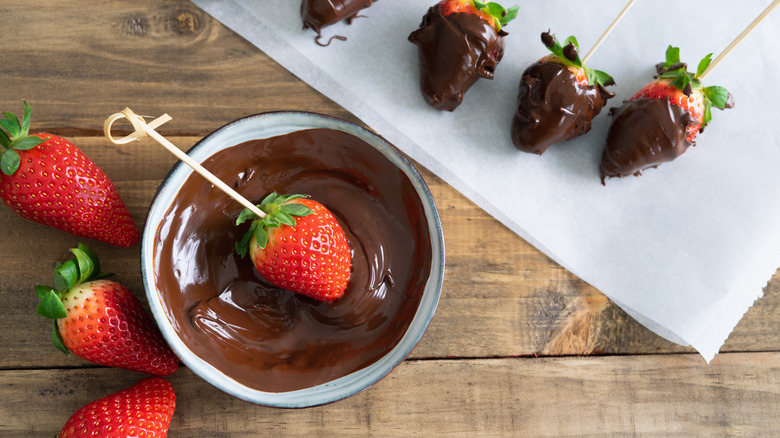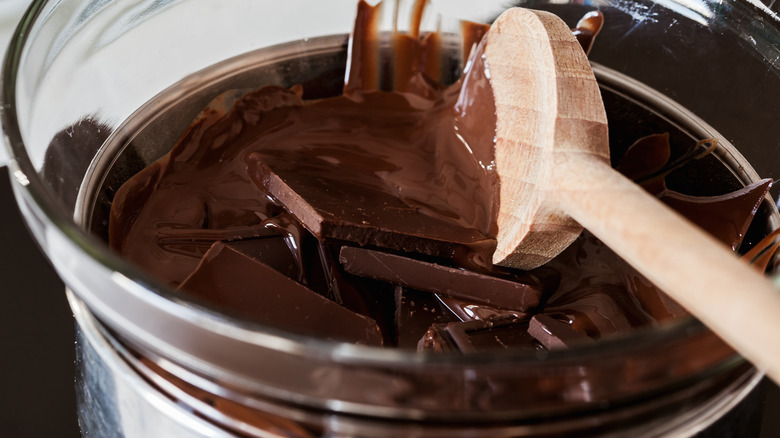What It Means To Temper Chocolate And How To Do It The Right Way
Rivaling vanilla for the most beloved dessert flavor, chocolate takes on countless forms that we integrate into baked goods, ice cream, drinks, and candy bars. While adding chocolate chips into cookie batter or cocoa powder into chocolate frosting are straightforward techniques for amateur dessert makers, making your own chocolate candy is in a class all its own.
The best chocolate candy has a distinct glossy sheen that is firm with a good snap and won't melt all over your fingers while you eat it. These characteristics are the result of a technique known as tempering. Tempering chocolate means melting it within a range of very specific temperatures. By regulating the temperature and melting process of chocolate, you effectively control how its molecules sit together. The aim is to avoid any graininess and to get the smoothest possible outcome.
The science is quite complex: Chocolate is made up of fat molecules that can form six different types of crystals, and each formation results in different textural and visual characteristics. There's only one formation of fat molecules that results in that desirable crisp, glossy, melt-resistant chocolate that's perfect for candy, truffles, and chocolate bark. Tempering chocolate is a delicate dance between heating and cooling, using rising and falling temperatures to rid chocolate of the five other crystal formations while building up the desired one.
Modern chocolatiers and candy factories use advanced chocolate tempering machinery that monitors the temperatures and agitates or vibrates the chocolate to keep it from overheating as it melts.
How to temper chocolate
Most of us are content to buy candy bars, leaving tempering to chocolatiers. But if you're up for a challenge, you can temper chocolate at home. It's a slow and low cooking process, requiring precision and vigorous stirring to keep the chocolate below a certain temperature. For milk chocolate and white chocolate, the temperature limit is 88 degrees Fahrenheit while dark chocolate requires temperatures of 91 degrees Fahrenheit.
Tempering chocolate the right way starts with choosing the right kind of chocolate. Discs known as couverture discs or high-quality, unflavored chocolate bars are ideal because they have a higher fat content than chocolate chips. There are a few ways to temper chocolate, but the simplest is on the stovetop.
So, you'll need a double boiler and a thermometer to carefully monitor the temperature of the chocolate as it melts. Roughly chop or grate the chocolate, and place two-thirds of it into the top pan of the boiler. Instead of boiling water, you'll use hot water to melt the chocolate until it's liquid smooth and reaches its temperature limit. You can then remove the top pan, stir the chocolate to cool it, and then add the remaining solid chocolate to the pot. Place the pan back over the double boiler to reheat the full amount of melted chocolate to its temperature limit, then take the pan off the heat and stir the chocolate vigorously to reduce the temperature and create the silkiest chocolate possible.

